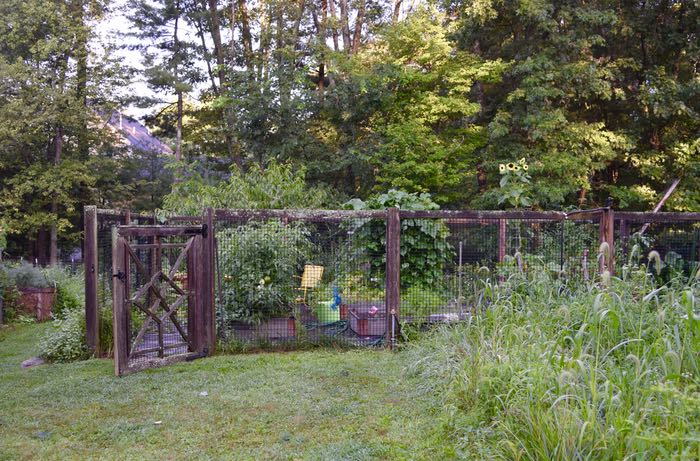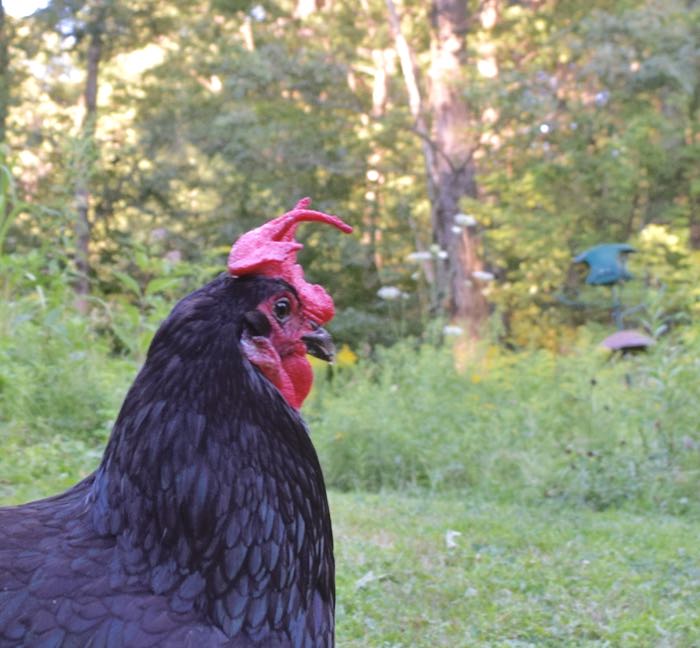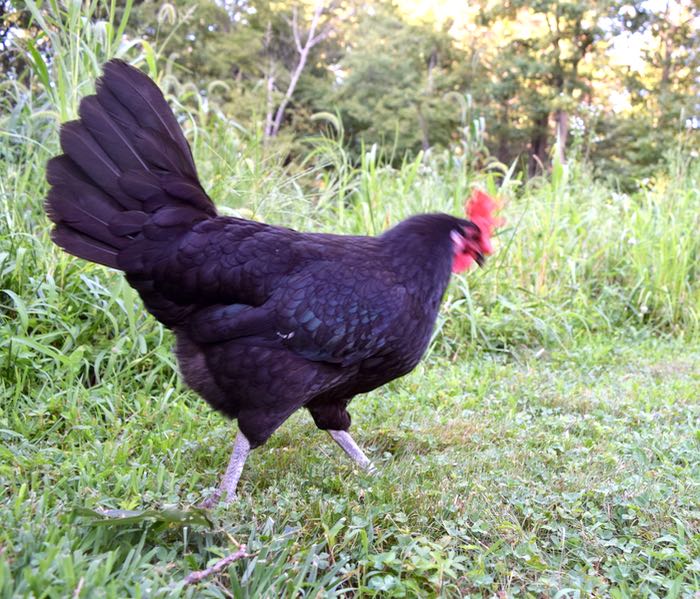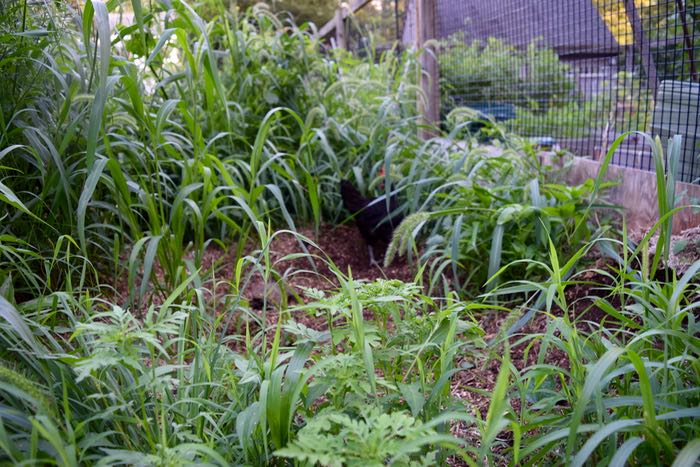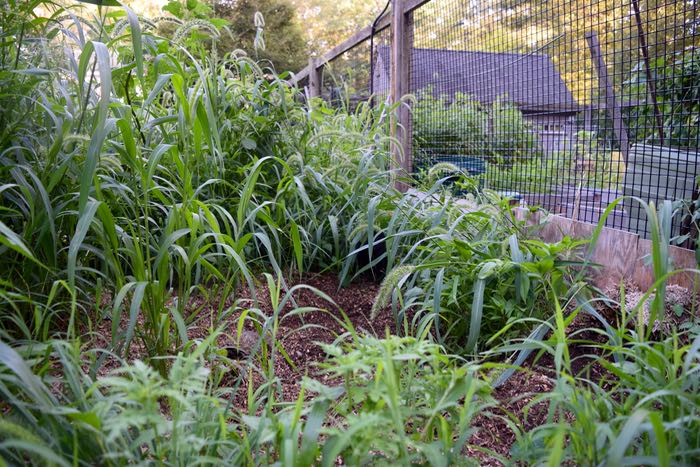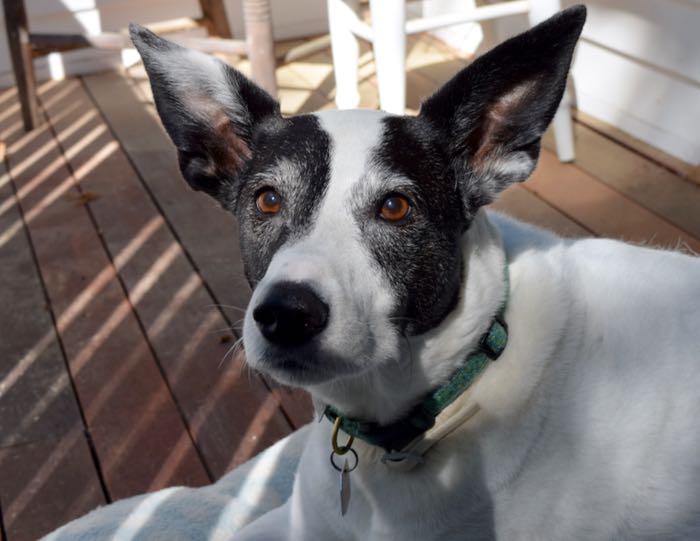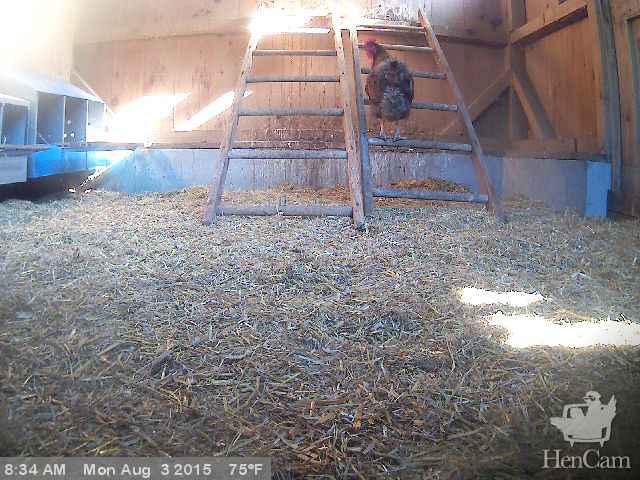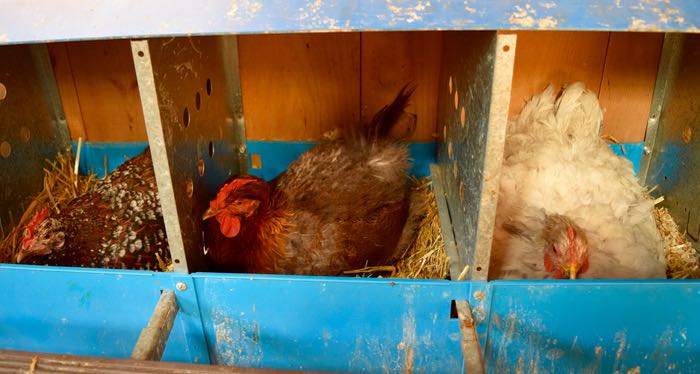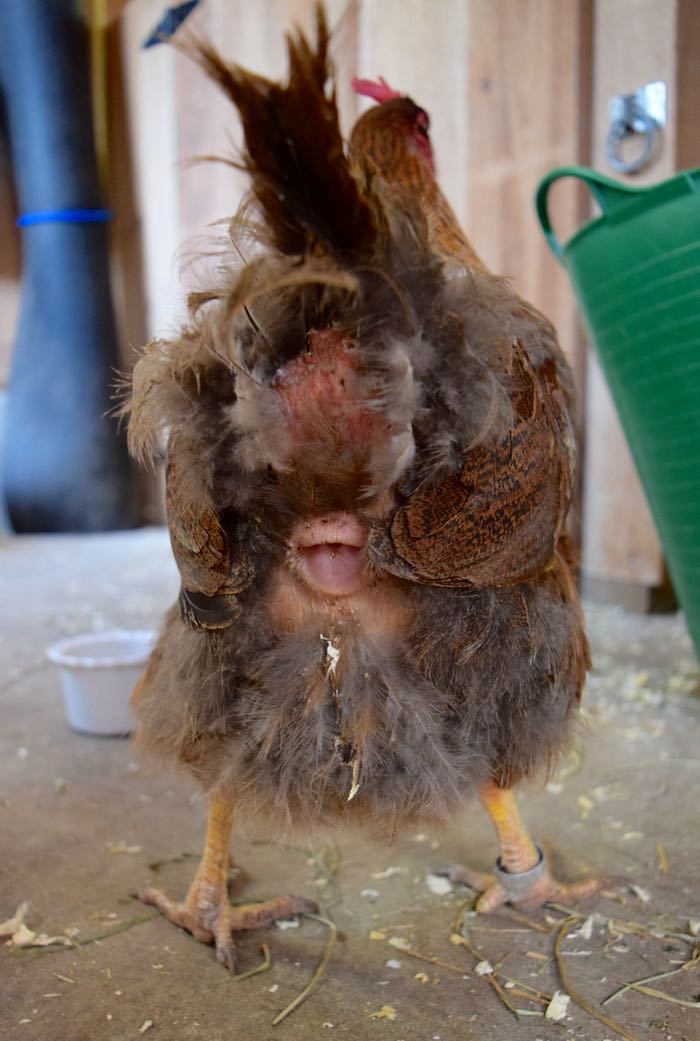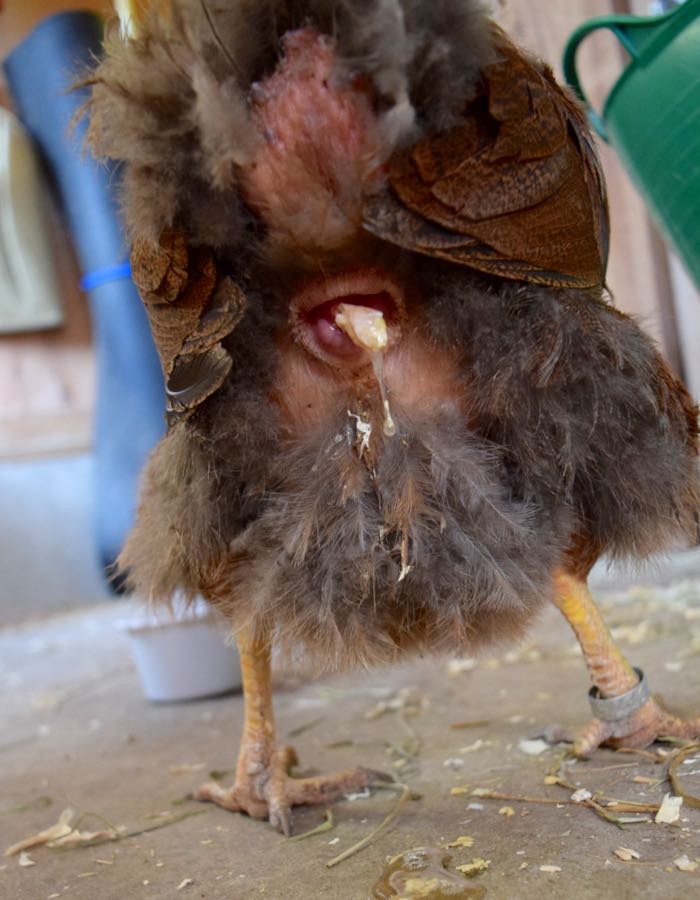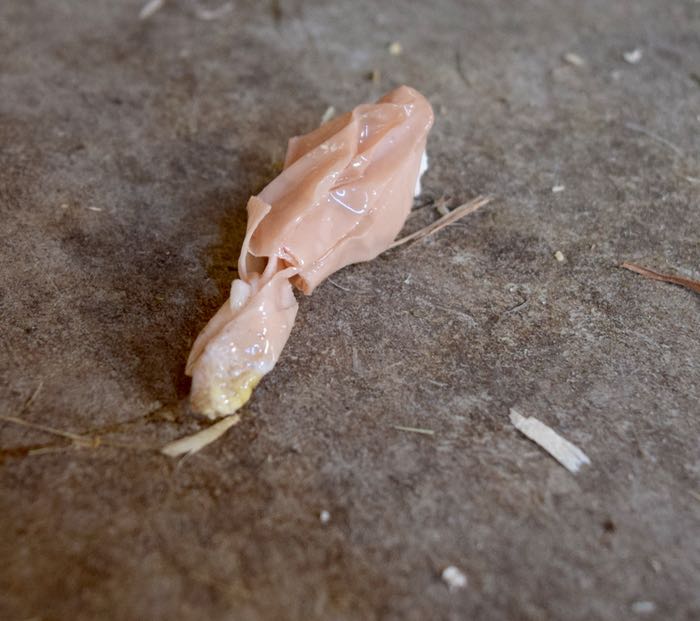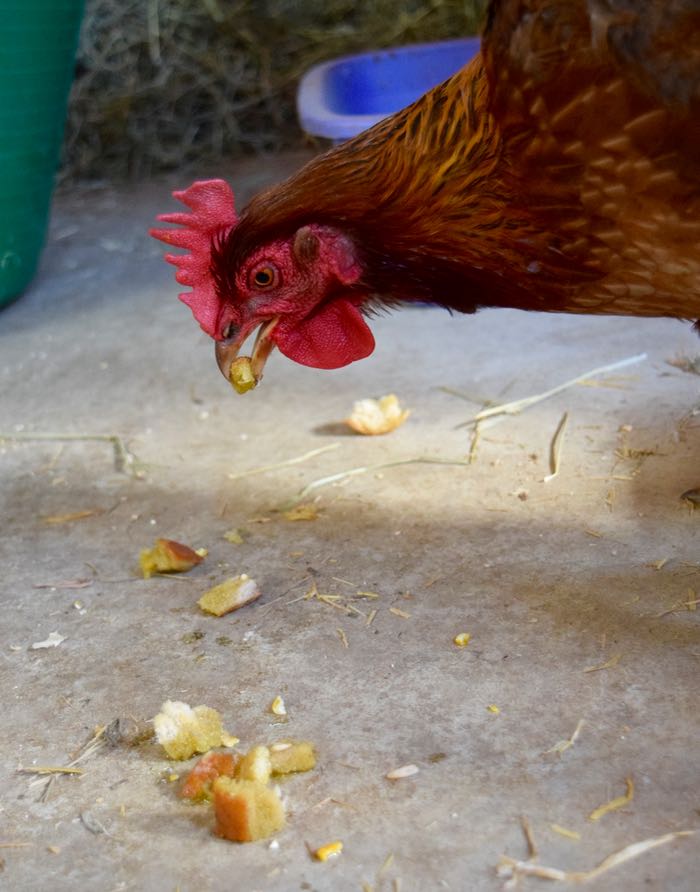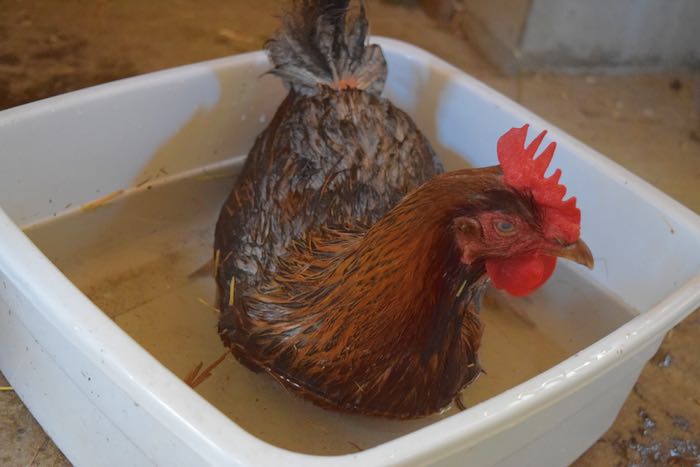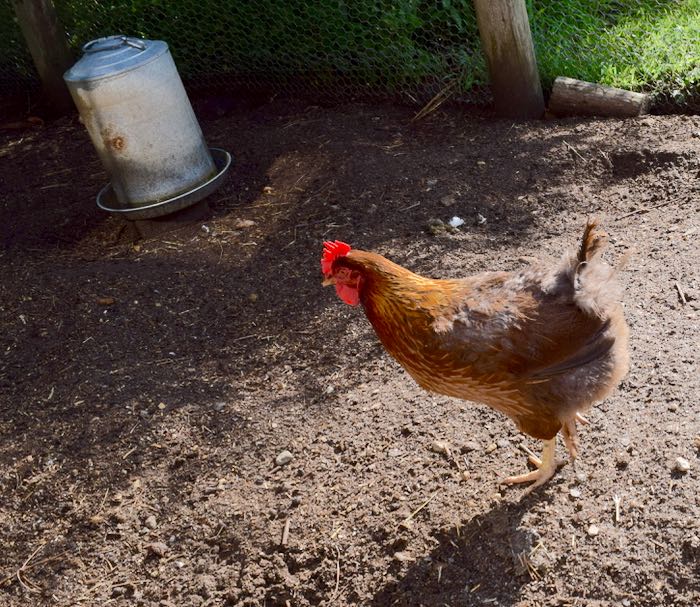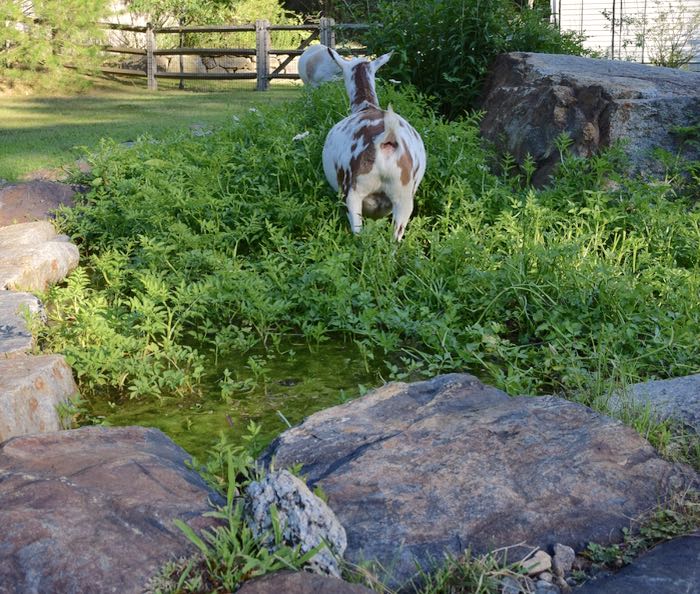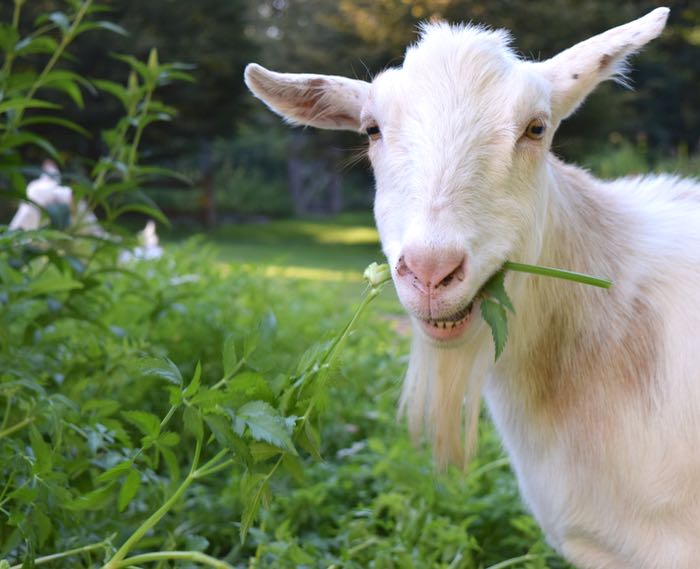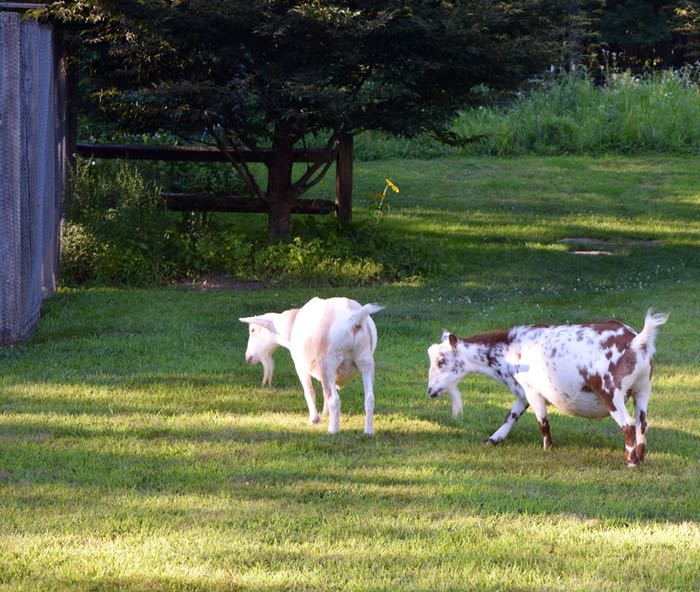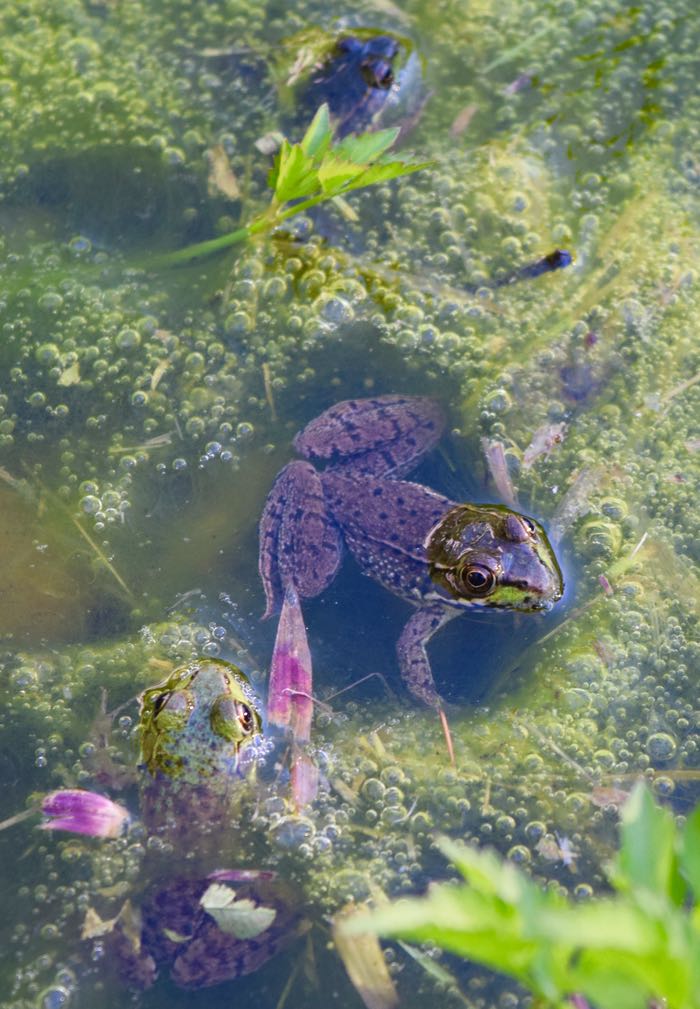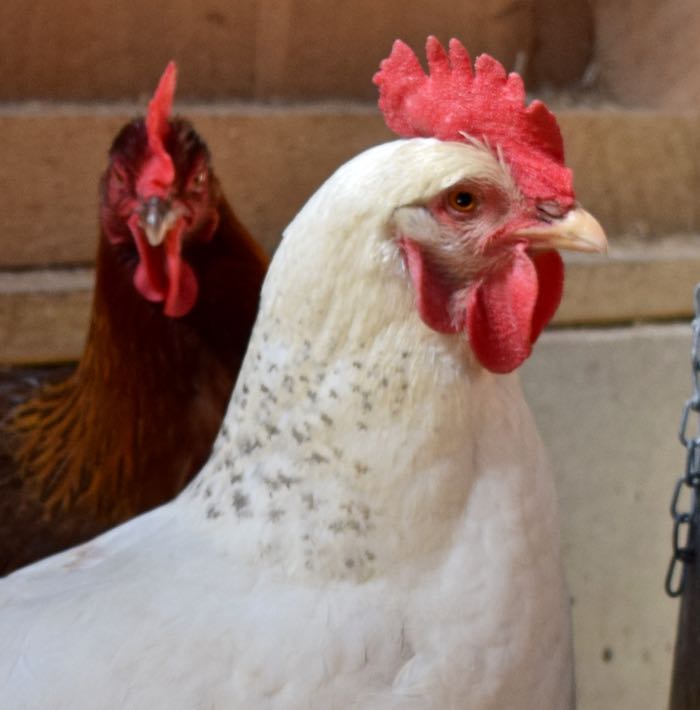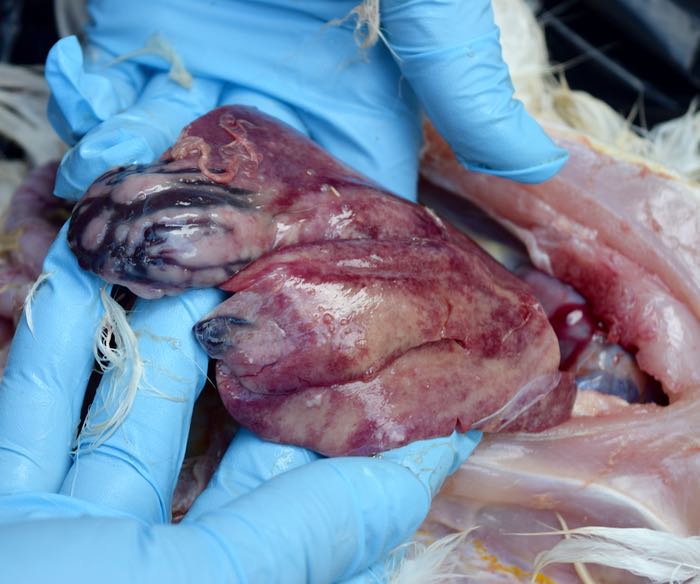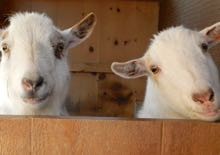Last week was a difficult one. It started with having to euthanize Opal, and it didn’t get much better from there. On Wednesday I went out to my vegetable garden to collect the first ripe tomatoes and got stung by a paper wasp. I’m not usually allergic to stings, but this time my foot swelled up… and then my hands… and then over the course of the day I watched as hives spread across my body. It was never so bad as to affect my breathing, but it was far from pleasant. I’ve been warned (by one of my readers who knows about such things) that the next time I get stung it will likely be worse. So, my garden gate remained open and the tomatoes and cucumbers that I threw into the air when I yelled and ran remained on the ground.
Steve was out of town, so there was no one to send in there to get the vegetables. But that didn’t mean that the yard had to be totally abandoned. I let the hens out.
Most of the girls stay on the lawn and scratch in the flower beds. Not Misty. She gets that gleam in her eye that I imagine she inherited from her Jungle Fowl ancestors.
Misty sped off to the pumpkin patch that has gone to weeds and flowers while I let the soil rest this year.
There she is. See her?
Now you don’t.
The problem is that while all of the other hens come when I call, Misty does not. I wasn’t about to wade into the weeds and chance upon a wasp nest. I waited safely on the grass. Finally, she remembered that she isn’t a wild thing and that the shaking of the scratch grain container means good things, even better than what her foraging brings.
I didn’t let the hens out again until this man came. Organic pest control. He suited up, bagged the wasp nest hidden in the vegetable garden and took it away.
I harvested tomatoes last night. And one huge zucchini that I gave to the hens.
